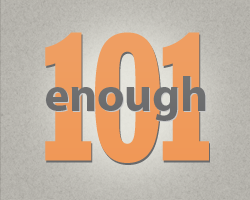
Editor’s Note: This post is a brief history, intended to provide a contextual background for understanding the complex issues that the Enough Project works on. It is part of the series Enough 101.
Since 2003, Sudan's military and government-backed militias (the Janjaweed) have repeatedly attacked the residents of Darfur, causing the deaths of more than 300,000 and displacement of 4 million people. Imagine the entire populations of Chicago and San Diego forced to flee their homes.
Many of these people are displaced within Sudan and are therefore referred to as internally displaced persons, or IDPs. However, more than 260,000 Darfuri refugees have fled the country and are living in 12 camps eastern Chad.
The main difference between IDPs and refugees is that IDPs have not crossed an international border from their country of origin. Also, while refugees must be fleeing from strictly defined forms of persecution, IDPs include those displaced by armed conflict, human rights violations, and natural disasters.
Out of the 15.2 million refugees in the world today, about 500,000 of them are from Sudan, ranking it fourth in the world behind Afghanistan, Iraq, and Somalia.
But the label “refugee” only refers to people who have crossed an international border. Before Sudan and South Sudan split in July 2011, the two countries combined were home to between 4.5 and 5.2 million IDPs—the largest displaced population in the world.
IDPs in Darfur
Today the U.N. estimates that there are approximately 1.9 million Darfuri IDPs living in over 150 camps scattered across Darfur’s three states. However, this widely cited statistic is fraught with unknowns, and Darfur specialists have strongly questioned why the figure was inexplicably revised down from 2.7 million in 2010.
The government of Sudan targeted civilians in Darfur because it believed they were supporting rebel soldiers. Now those civilians have moved from villages to IDP camps. The government fears that the IDPs are providing shelter and support for rebels, and is therefore pressing to dismantle the camps.
4.5 percent of the population of Sudan’s capital Khartoum is Darfuri refugees, most of whom live in the massive urban slum “black belt” around the outside of the city.
Since the camps are located in a region where small arms are prevalent and attacks still occur, IDP camp security poses an ongoing problem. In 2007 the international community created the African Union/United Nations hybrid operation in Darfur, or UNAMID. UNAMID is currently the largest peacekeeping mission in the world and is charged with the daunting task of providing civilian protection in Darfur, while facing the challenge of limited cooperation from the Sudanese government, who routinely denies humanitarian access across Darfur. UNAMID is currently mandated through July 31, 2012 and is expected to be extended.
Darfuri refugees in Chad
According to the United Nations, as of January 2012 there were more than 260,000 Sudanese refugees in Chad, where the vast majority live in 12 refugee camps in the east—many for close to a decade.
Chad is one of the poorest countries in the world and is inundated by refugees from Central African Republic, Sudan, and South Sudan, in addition to its own IDPs. The international community struggles to provide food, water, health services, and sanitation for the refugees and IDPs, and competition with local communities over access to resources—including water, firewood, and grass for thatching roofs—breeds resentment.
As in Darfur itself, security for the refugee camps is an ongoing problem. From September 2007-December 2010 the U.N, Mission in the Central African Republic and Chad, or MINURCAT, provided forces to assist local authorities in protecting the refugee camps. MINURCAT left at the request of the Chadian government, and was replaced by a United Nations-supported Chadian security force, the Détachement Intégré de Sécurité, or DIS, in 2011. DIS is tasked with ensuring security in and around the camps, as well as protecting convoys of IDPs.
Early marriage and gender-based violence is an additional issue in the camps. Family planning is a “taboo subject,” rape and other forms of sexual violence are common, and access to services for the victims is minimal.
Due to these security issues, most refugees are forced to depend almost entirely on humanitarian assistance because they are unable to legally access farmlands to cultivate their own crops for food.
The future of the crisis
While refugees in Chad from Central African Republic are allowed to resettle to third countries, Sudanese refugees are currently not allowed any options other than returning to Sudan. This restriction is rumored to be because of an agreement between the Chadian and Sudanese governments.
Durable solutions are necessary to address the IDP and refugee crises in Sudan and Chad. While the international community has attempted to provide humanitarian relief for this vast population, insecurity and Khartoum's hostility to the presence of international aid organizations has badly compromised the success of this effort. Major fighting ebbs and flows in Darfur, but a pervasive insecurity prevents people from leaving the camps and returning to their homes. This is the single greatest obstacle to a negotiated peace for Darfur. The camps serve as a semi-permanent “solution”—giving survivors a relatively secure place to stay—but life there is unpredictable so long as the root causes of the displacement remains unaddressed.
To learn more, check out: “Definitions for Humanitarian Issues: From Refugees to Famine,” and “Darfur: The Doha Peace Process, December 2010-present.”
This blog post was amended to add in details about the security and access challenges the displaced people and the humanitarians trying to serve them face. It also includes revised statistics for the number of Darfuri refugees and IDPs and a note about the controversy surrounding those estimates.

